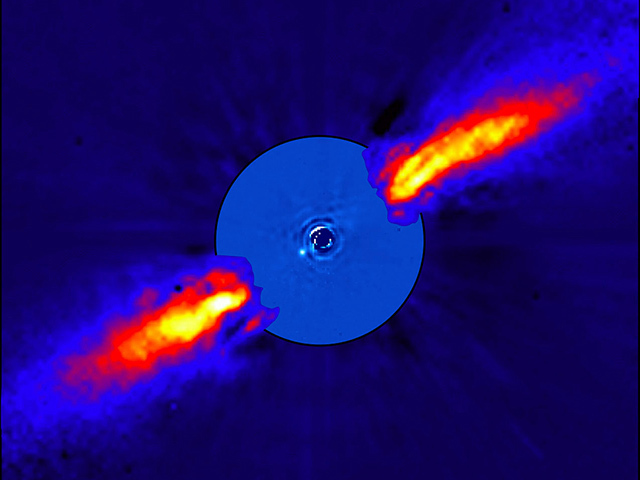News | October 15, 2018
Latest on the Kepler spacecraft

An artist's rendering of the Kepler spacecraft with a star and its planets.
Oct. 12 - On October 11, NASA woke up the Kepler spacecraft and maneuvered it into a stable configuration that will allow NASA to download the latest data with the least amount of fuel consumption. We are still monitoring the health of the spacecraft while working towards downloading data from Campaign 19.
Oct. 1 - NASA’s Kepler team has received data showing that the spacecraft’s ability to point precisely has degraded. In order to preserve high-value science data collected during its latest observation campaign, the Kepler team has placed the spacecraft in a stable, no-fuel-use sleep mode. Read more.
Sept. 5 - The Kepler spacecraft began collecting science data on Aug. 29 for its 19th observation campaign. After being roused from sleep mode the spacecraft's configuration has been modified due to unusual behavior exhibited by one of the thrusters. Preliminary indications are that the telescope's pointing performance may be somewhat degraded. It remains unclear how much fuel remains; NASA continues to monitor the health and performance of the spacecraft.
Aug. 24 - The Kepler spacecraft went into sleep mode after successfully downloading Campaign 18 data. It is unclear how much fuel is still on board; NASA is looking into the health of the spacecraft and determining a full range of options and next steps.
Aug. 9 - The Kepler spacecraft has successfully downloaded Campaign 18 data to Earth. We are monitoring the spacecraft very closely and will provide more information when its status has been fully assessed.
Aug. 3 - Kepler made contact yesterday and is successfully downloading its store of science data from its last observation campaign, Campaign 18.
July 6 - NASA has placed the spacecraft in a hibernation-like state in preparation to download the science data collected in its latest observation campaign. Read more.
March 14 - Trailing Earth’s orbit at 94 million miles away, the Kepler space telescope has survived many potential knock-outs during its nine years in flight, from mechanical failures to being blasted by cosmic rays. At this rate, the hardy spacecraft may reach its finish line in a manner we will consider a wonderful success. With nary a gas station to be found in deep space, the spacecraft is going to run out of fuel. We expect to reach that moment within several months. Read more.








